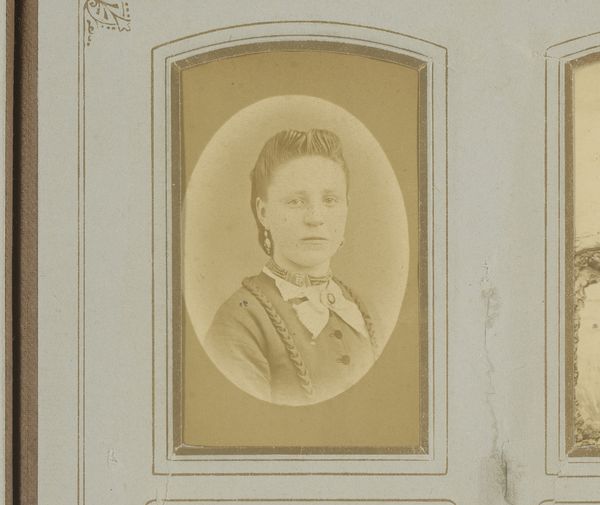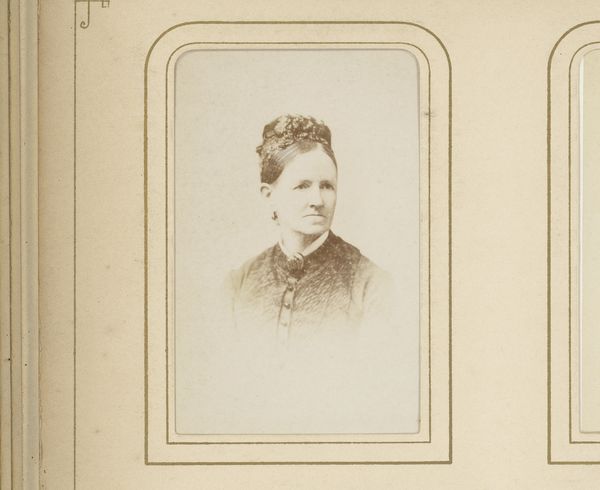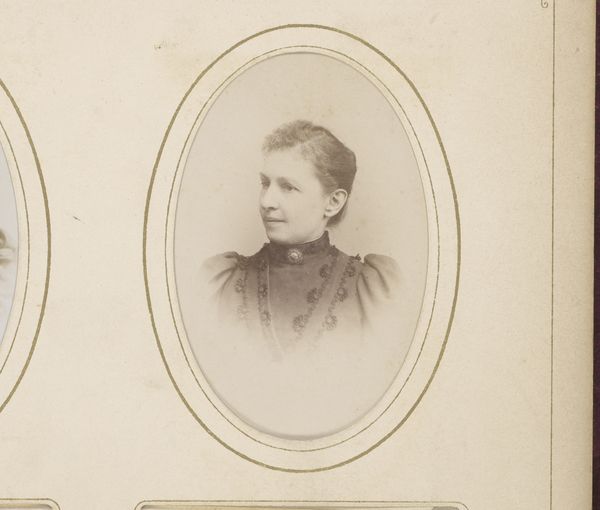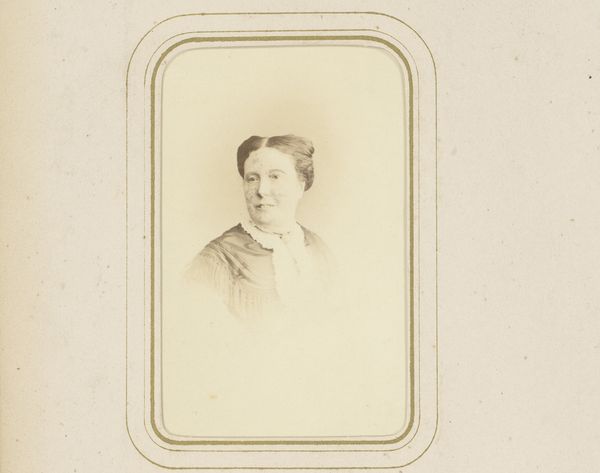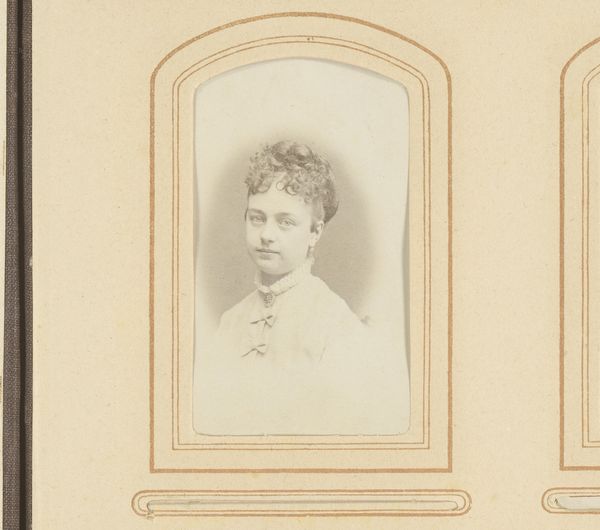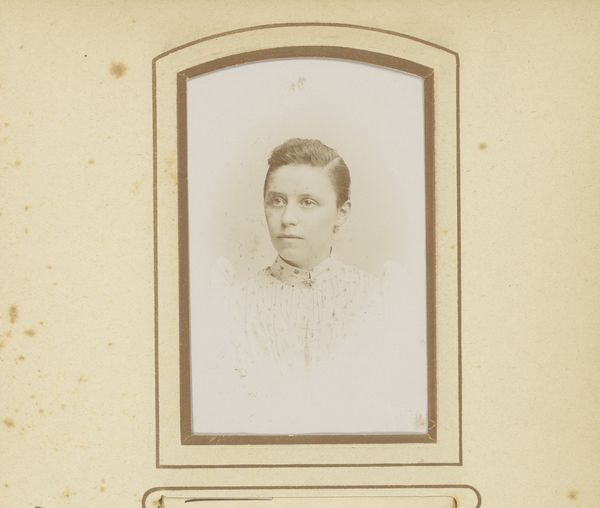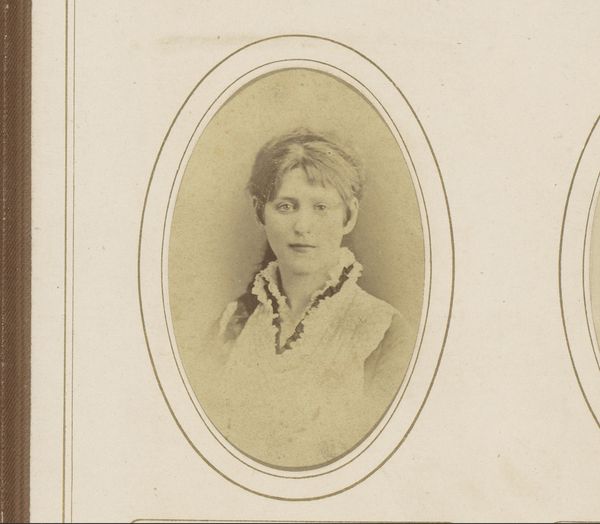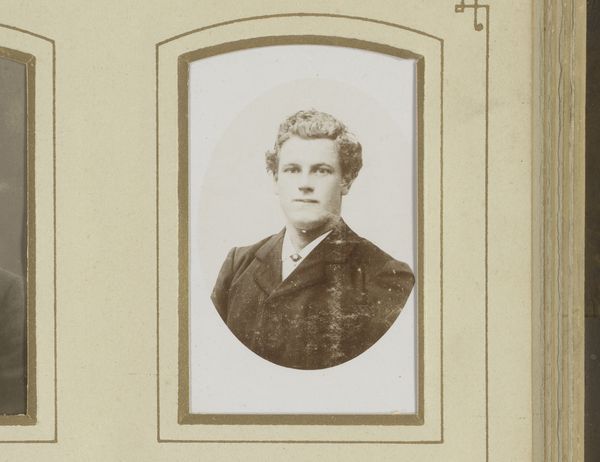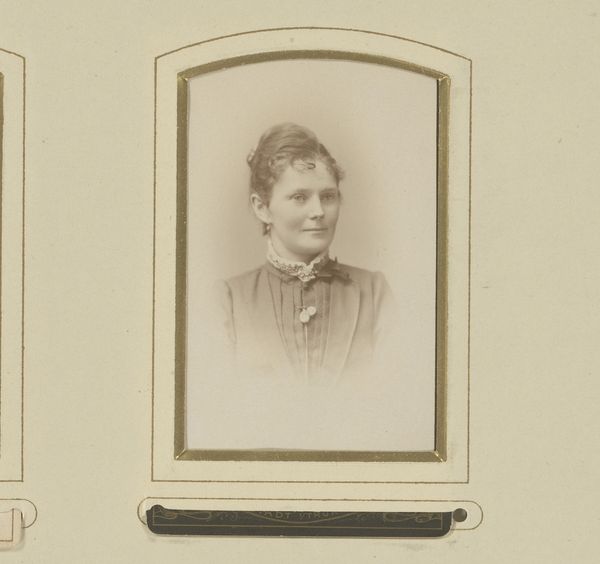
photography, gelatin-silver-print
#
portrait
#
photography
#
gelatin-silver-print
Dimensions: height 83 mm, width 52 mm
Copyright: Rijks Museum: Open Domain
Editor: Here we have "Portret van een vrouw," or "Portrait of a Woman," a gelatin silver print created sometime between 1867 and 1884 by Wegner & Mottu, and it now resides at the Rijksmuseum. I am immediately drawn to the texture of the print. It's got that hazy quality of early photography. What's your take? Curator: Well, first, think about gelatin silver prints themselves. By the late 19th century, this technology enabled mass production of images. So, how did that democratization of image-making affect traditional portraiture, previously reserved for the wealthy and rendered in paint or sculpture? What labor went into the processing of this medium and the implications that it would be something reproducible for any patron of any socioeconomic class? Editor: That's fascinating! I never considered the socio-economic impact of photographic techniques. Does the studio, Wegner & Mottu, offer any hints? Curator: Absolutely! Investigate their business. Who were their typical clients? Did they cater to a specific class? Look into the chemicals involved in the gelatin silver process. Were they locally sourced or imported? That network of supply and demand speaks volumes. The value wasn't simply placed upon representation or expression but on the cost for making sure the person had access to have it created in the first place. Editor: So, rather than just seeing a portrait of an anonymous woman, we’re looking at the convergence of industry, access, and evolving social norms captured in a single print. Curator: Precisely! Consider photography’s role in shaping perceptions of self and identity during this period. Whose story does the materiality of this portrait really tell? Editor: That shifts my focus entirely! I'll be diving deeper into Wegner & Mottu's practices. Thanks!
Comments
No comments
Be the first to comment and join the conversation on the ultimate creative platform.
